Unapologetic Feminine Excess
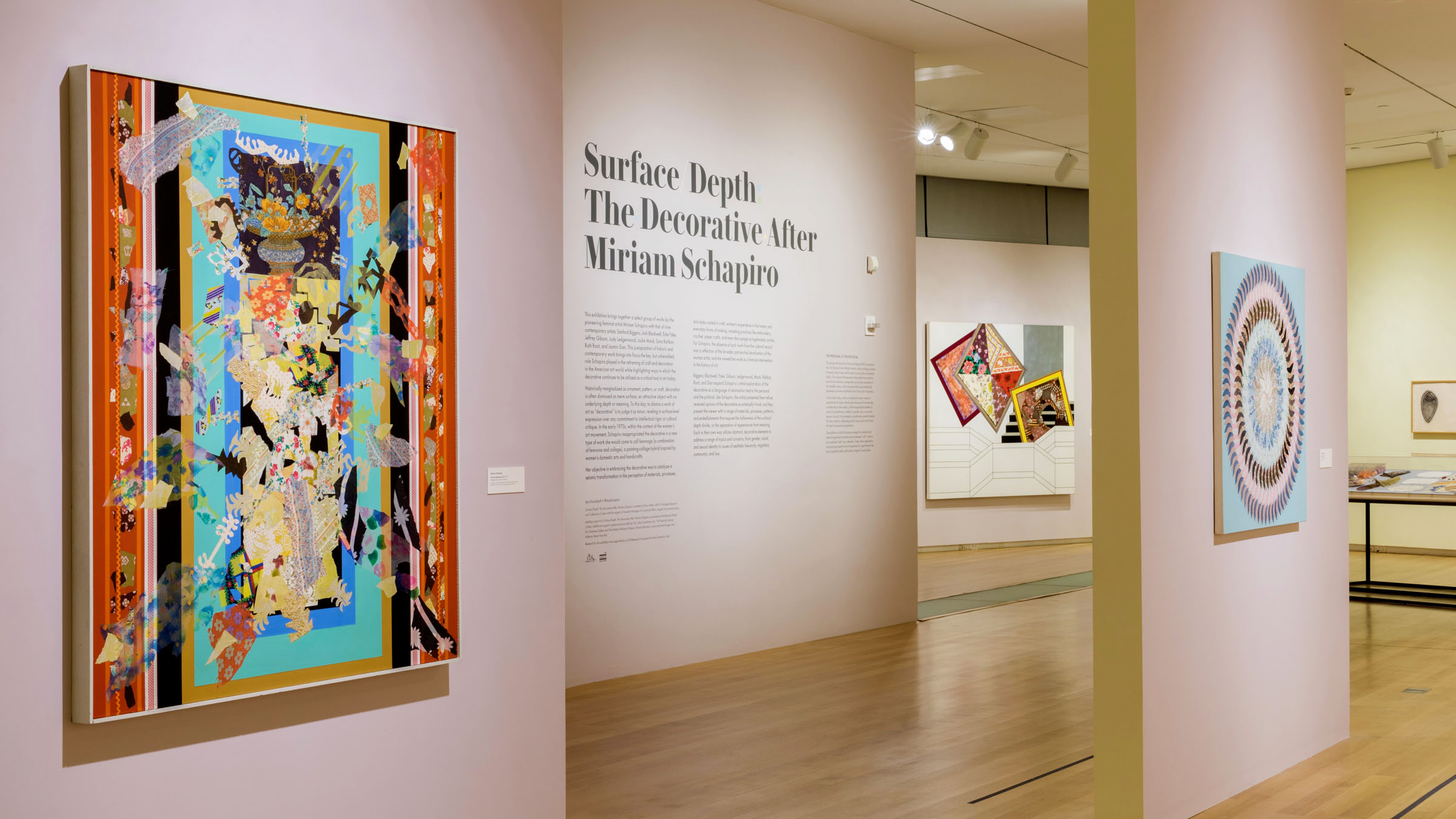
The pioneering feminist artist Miriam Schapiro was the inspiration for the 2018 exhibition Surface/Depth: The Decorative After Miriam Schapiro. Written by the exhibition's curator, Elissa Auther, Deputy Director of Curatorial Affairs and William and Mildred Lasdon Chief Curator, this previously published essay examines photographs taken by Schapiro in the mid- to late 1970s that capture the varied objects that inspired her femmage creations.

Behind this exchange is the story of Schapiro’s radical transformation of her painting practice in the early 1970s, ignited by the women’s movement. Shortly before this time, Schapiro had produced a body of work in the dominant language of hard-edged, geometric abstraction, and her political conversion to feminism led her to view these works as nascent attempts to come to terms with herself as both a woman and an artist. Eventually, her newfound feminist identity effected a dramatic shift in her practice, away from this prevailing style to the enthusiastic elevation of craft and decorative traditions, especially those associated with women’s culture and domestic labor. She called this new form femmage (fig. 1), a neologism that combined feminine and collage, reflecting the tighter, hard-won alignment of her practice as an artist with her politics as a feminist.
The beautiful black-and-white photographs pictured here, most likely shot by Schapiro in the mid- to late 1970s, provide a sampling of the wide range of patterns, techniques, and handcrafted objects that inspired the artist’s femmage creations. Altogether, there are about 150 of these photographs preserved in Schapiro’s archive, in files that she simply labeled “Femmage / Black & White Prints.”[i] Some of the images are of objects that can be identified as belonging to Schapiro’s vast collection of textiles, handkerchiefs, doilies, lace, ribbons, buttons, dolls and doll furniture, masks, fans, jewelry, and tourist curios. Other photographs depict compositions in which these objects form and spill out of rectangular frames, a characteristic feature of the femmages as well. Still others, from museums like the Smithsonian and the Los Angeles County Museum of Art, represent objects in permanent collections. With few exceptions, the photographs conform to museum standards of the day for “record photography,” that is, black-and-white images shot from above, most likely on a copy stand, for documentary purposes.
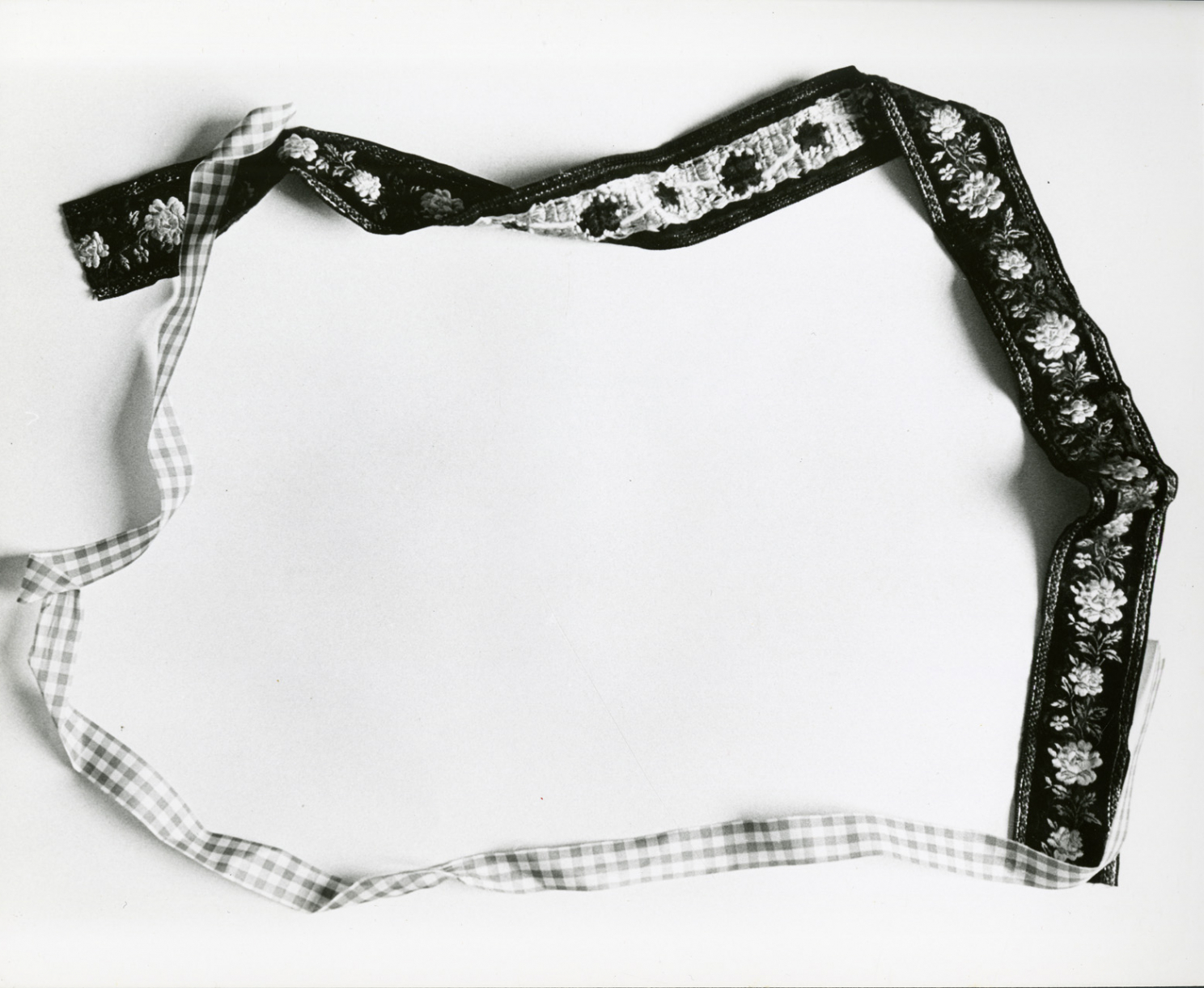
There’s no telling what Schapiro planned to do with these images, but they are clearly related conceptually and stylistically to her femmages. Many seem to document her research into the history of women’s craft, and at least one of the objects photographed appears as part of the suite of prints titled Anonymous Was a Woman (1976). A small number, as in the photographs of dolls, bring objects to life by virtue of their inspired placement within the frame. Finally, there is a group of photographs in which decorative objects and materials are arranged along the perimeter of the image, creating frames and borders around otherwise empty fields.
These photographs provide a bird’s-eye view of Schapiro’s distinctive reappropriation of the decorative as a feminist aesthetic language. Working with thread, ribbon, beads, feathers, and other elements related to women’s domestic labor and handicraft, she composed frames out of materials conventionally used to decorate surfaces and placed them within the image itself. In other words, what is normally considered merely supplemental, secondary, or peripheral to a work of art—the frame, ornament, or decoration—is now at its center. By flipping the center/periphery relationship, Schapiro destabilizes the distinction between surface and depth that is largely responsible for the dismissal of decoration as superficial, a veneer over the “real,” deeper meaning of the work. As decorative ornament and the main event of the photographs, these frames are both surface and depth, melded into new compositional wholes.
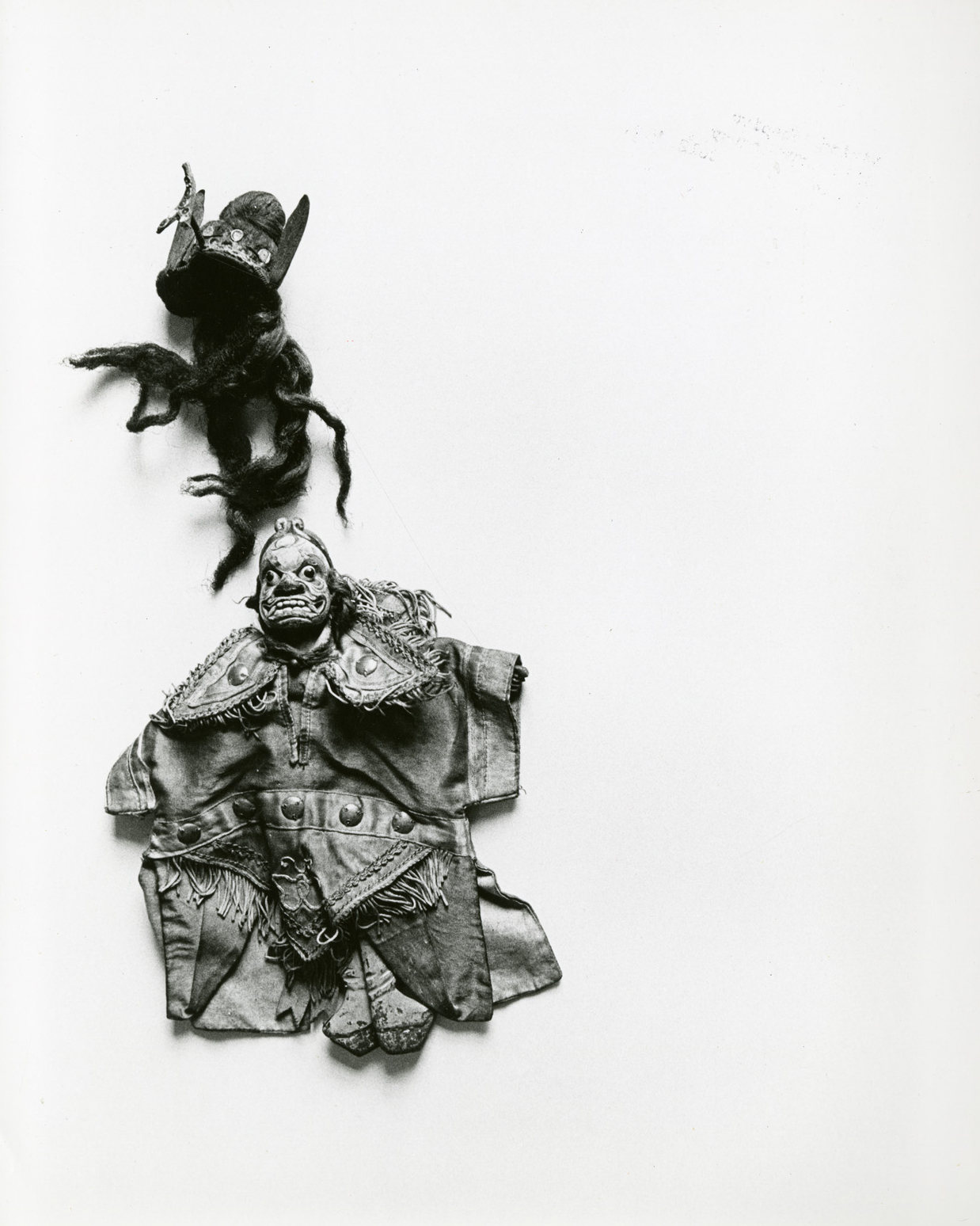
In the femmages, Schapiro extends this strategy of productively confusing distinctions between surface and depth through the use of collage elements associated with women’s textile craft traditions, from quilting to embroidery to crochet. Collage, a technique predicated on the overlapping of applied elements (all surfaces, really), further allowed Schapiro to question where decoration begins and ends. Given its long history as a maligned aesthetic, “to come out on the other end and take the stance that I take today on decoration,” as she put it, was nothing short of a complete personal, professional, aesthetic, and political reimagining of her work in which decoration and feminist politics are joined.
Femmage as a Feminist Art Form
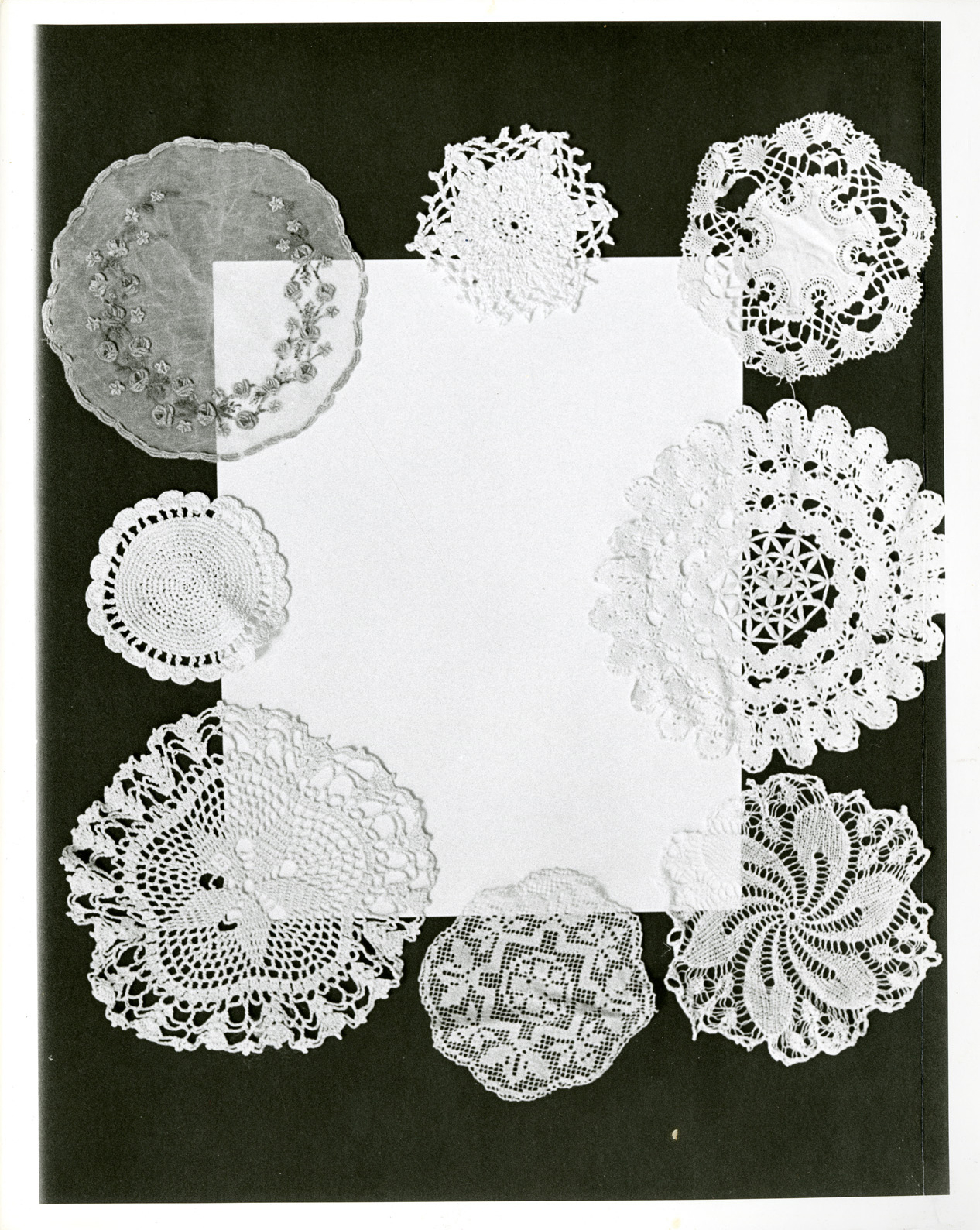
“Decoration,” or what Schapiro called “the dirtiest word,” describes the aesthetic language of her femmages. In her day, to judge a work of art “decorative” was to dismiss it as minor and subordinate, reveling in surface-level expression over any commitment to intellectual rigor or cultural critique. Crucially in regard to Schapiro’s conception of the femmage, the derogatory power of “decoration” draws upon Western art history’s feminization and condemnation of color, ornament, and other surface effects as emotional and seductive, thus constituting a false, cosmetic, shallow, irrational, or meaningless aesthetic. In this formation, the decorative is a gendered and sexualized aesthetic in which the female body, itself marginalized as a decorative object, plays a leading role as a threat to order and reason.
The equation between the female body and the impurity or seduction of surfaces finds its roots in classical philosophy’s abiding suspicion of the image as secondary and inferior to language. We see the lingering effects of this suspicion in modernist theory and art criticism from the nineteenth century forward, in which “decoration” and “the decorative” function as terms of exclusion, negative judgments against which the legitimately artistic is defined. Opposed to the decorative image, the rigorous modernist of Schapiro’s day strove for clarity, structure, concept, and truth, and this constellation of associations was, unsurprisingly, aligned with masculine control, order, and restraint.
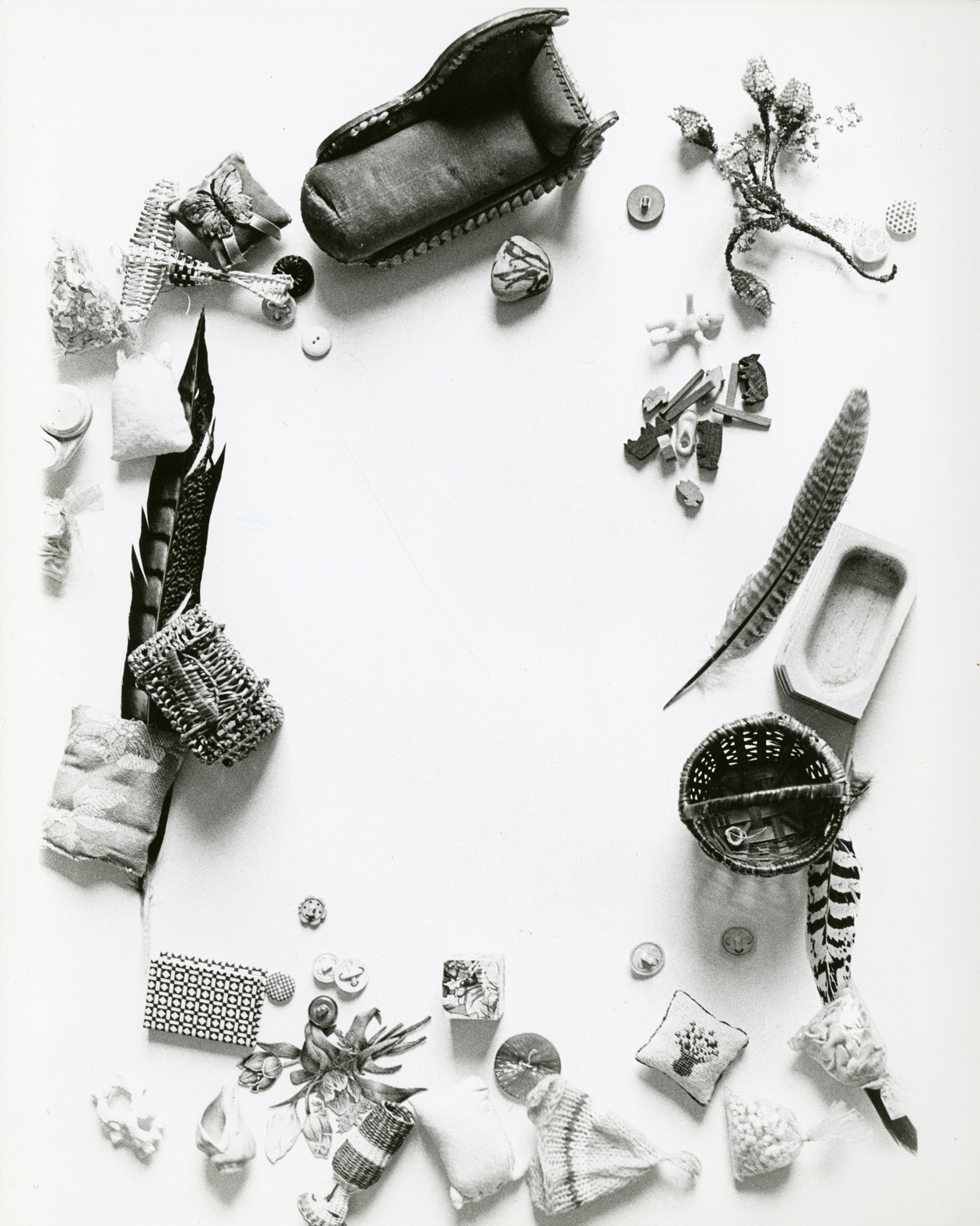
While it was not unusual for male painters of Schapiro’s generation to have their work dismissed as decorative, it was a far more typical response to the work of women artists, reinforcing an assumption about their creative practice as a mere extension of their gender. The intertwining of the social and aesthetic contexts in which “decorative” was wielded as a term of exclusion for women artists in particular adds gravitas to Schapiro’s description of her “soul searching” struggle to embrace, and ultimately elevate, the decorative.
Schapiro’s femmages, rooted as they were in the materials and practices of women’s creative traditions, contested the low cultural status accorded to these histories as decorative pursuits rather than fine art. Thus the femmage was a direct challenge to the formal austerity and purported intellectual heft of the high modernist abstraction of her day. Against this authority, Schapiro asserted a maximalist decorative aesthetic in which the distinction between surface and depth was undone by unapologetic feminine excess.
[1] Jan Avigokos, “The Decorative Politic.” Art Papers (Nov/Dec 1982): 7.
[2] The author gratefully acknowledges Fernanda Perrone and Stephanie Crawford for facilitating her research and granting permission to reproduce these photographs from the Miriam Schapiro Papers, Special Collections and University Archives, Rutgers University Libraries.
Subscribe
Join our mailing list.
Join
Become a member and enjoy free admission.
Visit
Find out what's on view.